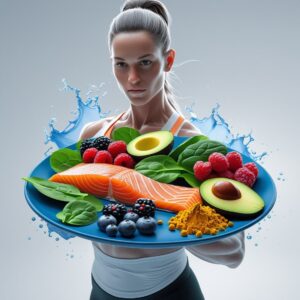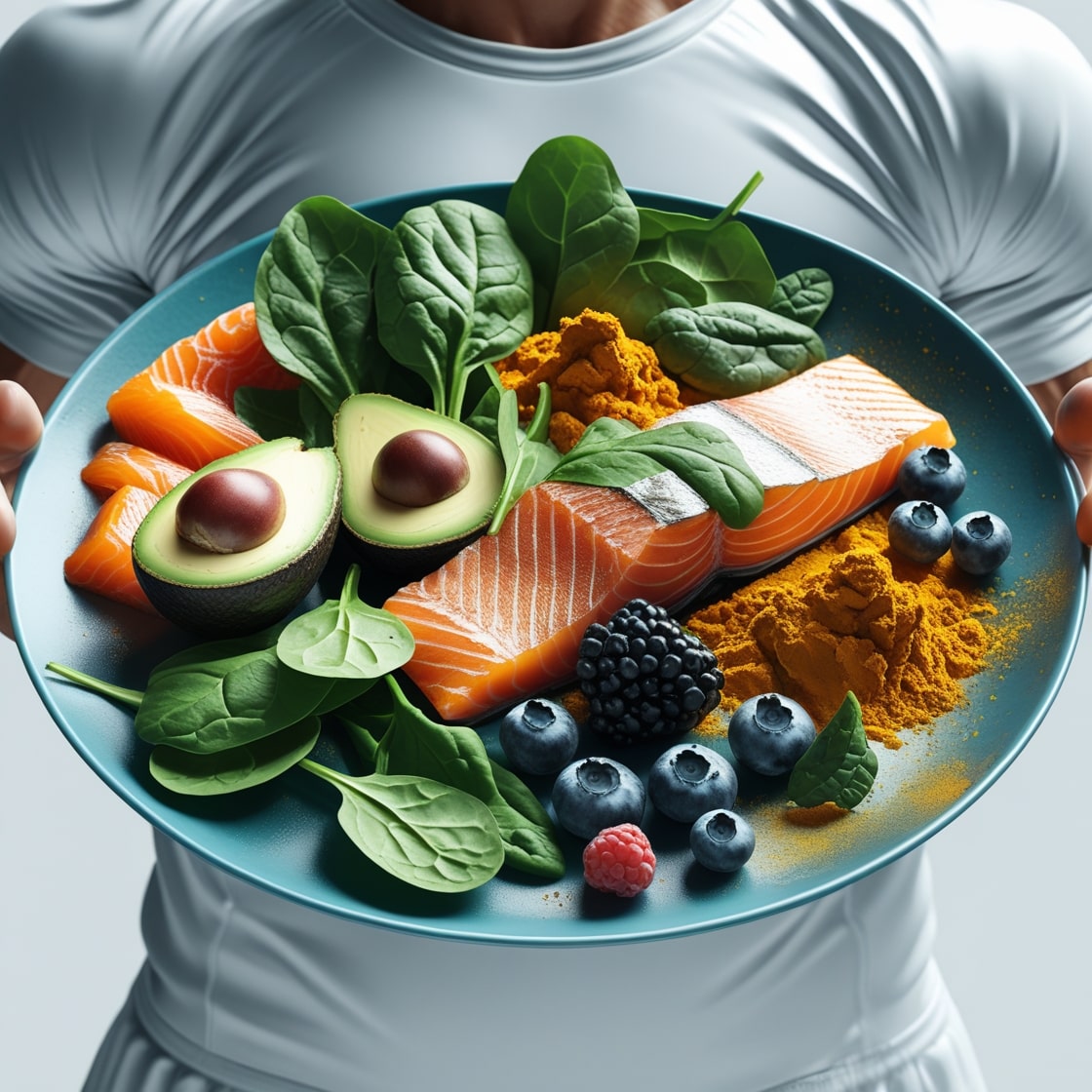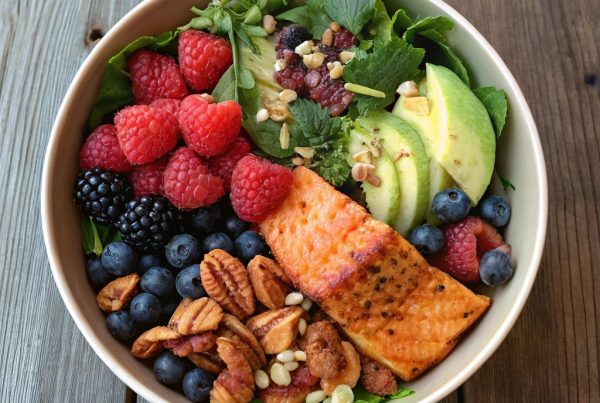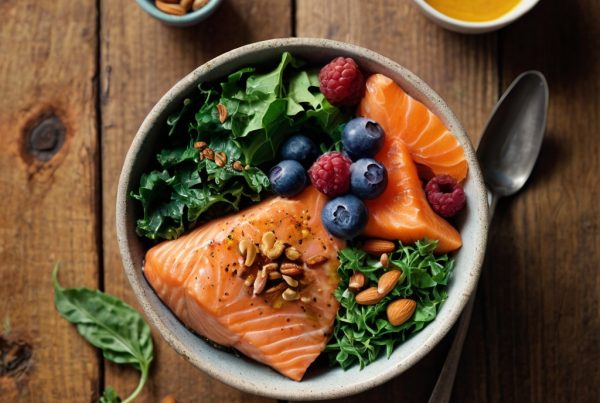Are you pushing yourself to the limit – training harder, going further, striving for peak performance? But are you unknowingly sabotaging your efforts?
We often focus on fueling our bodies with protein and carbohydrates, but what about the hidden inflammation that’s silently hindering our gains? It’s a common oversight, yet it can drastically impact recovery, energy levels, and overall athletic potential.
Imagine consistently performing at your best – faster times, stronger lifts, quicker recoveries. This isn’t just wishful thinking; it’s the power of an anti-inflammatory diet.
Let’s dive into how you can strategically nourish your body and unlock your true athletic potential – starting with point number 6, as it might just reveal the long lost way to truly feel energized, resilient, and ready to dominate.
Ignite Athletic Potential
It’s easy to think pushing harder through pain is the key to unlocking peak athletic performance – but what if that very effort is actually holding you back?
That extra mile or grueling workout, while seemingly beneficial, could be fueling inflammation and slowing recovery.
While training regimes focus on maximizing output, elite athletes are increasingly recognizing the power of their diet to optimize results.
The secret lies in understanding how food directly impacts tissue repair, energy levels, and overall resilience.
Every nutrient deficiency or inflammatory trigger is an opportunity lost for enhanced speed, strength, and endurance.
But here’s what coaches often don’t emphasize: nutrition isn’t just about fueling workouts; it’s about strategically combating the internal battles that hinder your potential.
Let’s explore how a targeted anti-inflammatory diet can truly ignite athletic performance.
Inflammation’s Silent Sabotage
Even your athletic performance could be suffering from something you might not even realize – inflammation. It’s a sneaky saboteur, constantly working behind the scenes and impacting how your body recovers, rebuilds, and performs at its peak.
Think about it this way: intense training puts tremendous stress on muscles and tissues. This naturally triggers an inflammatory response as part of the healing process. However, when this inflammation becomes chronic – constantly elevated – it starts to interfere with that recovery.
Imagine a persistent, low-grade fire in your body. It’s not a raging inferno, but it’s still there, steadily damaging tissues and slowing down the repair process. This can lead to increased muscle soreness, reduced range of motion, and even a higher risk of injury. Essentially, you’re fighting against yourself.
 Certain foods contribute significantly to this chronic inflammation. Processed foods, sugary drinks, and excessive amounts of unhealthy fats are prime culprits. These items promote an environment within the body where inflammatory molecules flourish.
Certain foods contribute significantly to this chronic inflammation. Processed foods, sugary drinks, and excessive amounts of unhealthy fats are prime culprits. These items promote an environment within the body where inflammatory molecules flourish.
This doesn’t mean you need to eliminate all carbohydrates or fats – it’s about prioritizing whole, unprocessed foods that actively combat inflammation. Focusing on nutrient-rich options like fruits, vegetables, and lean proteins helps your body manage this response effectively.
The Athlete’s Body: Reactive
Think about your body as a high-performance machine – an athlete’s body is constantly pushing its limits. But all that intense exertion creates wear and tear, doesn’t it? It generates inflammation throughout the system.
The athlete’s body becomes reactive to this constant stress. This means every workout, every competition, adds fuel to the fire of inflammation.
Imagine a car engine running at full throttle for hours – it produces heat and exhaust fumes. Similarly, repeated intense physical activity stresses muscles, joints, and tissues, triggering an inflammatory response. The body’s natural defense mechanisms kick in to repair damage, but prolonged inflammation can actually hinder recovery and performance.
This reactive state isn’t just about muscle soreness; it impacts everything from energy levels to sleep quality – all crucial for optimal athletic function.
Gut-Muscle Connection Explained
If gut health is compromised, it directly impacts your ability to perform. You see, there’s a really strong connection between what happens in your digestive system – that’s your gut – and how well your muscles function.
Think about this: Your gut produces many of the nutrients you need for energy and muscle repair. These are essential for peak performance.
When things aren’t quite right in your gut, it can lead to inflammation throughout your body. This inflammatory response can hinder muscle recovery after intense training. It also reduces overall energy levels.
The key is understanding the ‘gut-muscle connection.’ A healthy gut supports optimal muscle function by providing essential nutrients and minimizing systemic inflammation.
Essentially, a happy gut equals a stronger, more resilient body – perfect for pushing your athletic performance to the next level.
Anti-Inflammatory Foods – Powerhouse
During peak training, your body is under immense pressure. Every workout, every session – it all contributes to inflammation. You need to fuel your performance *and* protect yourself from the damage that comes with intense activity. That’s where an anti-inflammatory diet becomes absolutely crucial.
Certain foods are naturally packed with compounds that actively combat inflammation. These aren’t just ‘healthy’; they’re powerful allies in your quest for peak performance.
Think of fatty fish like salmon and tuna – rich in Omega-3s, which have been shown to reduce muscle soreness and speed up recovery after strenuous exercise. Then there are brightly colored fruits and vegetables like berries and leafy greens, bursting with antioxidants that neutralize free radicals generated during intense physical exertion. These nutrients help repair damaged tissues and prevent further inflammation.
Don’t underestimate the power of spices! Turmeric, for example, contains curcumin – a potent anti-inflammatory agent frequently used in sports nutrition to reduce pain and swelling.
Beyond Berries – Unexpected Heroes
It’s easy to think that berries alone will fuel your performance as an athlete. You might picture a vibrant smoothie packed with blueberries and raspberries! But there are so many other unexpected heroes in food that can dramatically reduce inflammation and boost your recovery – and you need to know about them.
Consider fatty fish like salmon, mackerel, and tuna. These aren’t just delicious; they’re brimming with omega-3 fatty acids. These fats are incredibly effective at combating inflammatory responses within the body after intense training. Think of it as a natural repair crew for your muscles!
The key here is *fatty* fish – you want that healthy fat content to deliver those powerful anti-inflammatory benefits. It’s not about just eating any fish; it’s about prioritizing these specific types.
Don’t underestimate the power of leafy greens like kale and spinach. These are packed with antioxidants, which help neutralize harmful free radicals generated during exercise. Free radicals contribute to inflammation, so minimizing their impact is crucial for faster recovery.
These greens aren’t just about vitamins; they’re actively working to protect your cells from damage – a huge advantage when you’re pushing your body to its limits.
Mastering Meal Timing for Recovery
What’s key is understanding that your body needs fuel— specifically, anti-inflammatory foods—to recover effectively after a tough workout. It’s not just about *what* you eat, but *when*.
Timing your meals around training sessions can make a huge difference in how quickly your muscles repair and rebuild. Focus on consuming nutrient dense food within 30-60 minutes post-workout to maximize recovery.
Think about it: after intense exercise, your body is flooded with inflammation. Consuming protein and carbohydrates immediately helps kickstart the repair process and replenish glycogen stores—fuel for your muscles. A simple smoothie with protein powder and fruit can do wonders!
Consider a pre-workout meal 2-3 hours before training to top up energy levels, again favoring complex carbs like oats or brown rice. This provides sustained fuel during the workout itself.
Don’t skip this step— it ensures you have enough energy for your session and minimizes muscle breakdown. A banana with a handful of almonds is a great option!
Essentially, mastering meal timing around training helps optimize recovery, reduce inflammation, and ultimately boost performance.
Hydration’s Role in Reducing Swelling
Many athletes understand that fueling their bodies correctly is key to peak performance. But you might be surprised at how much a simple element – hydration – can impact your results. Let’s talk about why keeping yourself properly hydrated plays such a crucial role in reducing swelling and supporting optimal athletic function.
Water, quite simply, helps flush out metabolic waste products from the muscles. When you exercise, these build-up can cause inflammation which leads to swelling.
Think of it like this: your body is constantly working hard, and that work generates byproducts. If those byproducts aren’t efficiently removed through adequate hydration, they can contribute to fluid retention and that uncomfortable feeling of swelling. Proper hydration facilitates the removal of these substances, minimizing inflammation’s impact.
Furthermore, dehydration actually *increases* your body’s reliance on sodium – a mineral that contributes to water retention.
When you’re dehydrated, your kidneys try harder to conserve fluid, and this can lead to increased sodium levels in the bloodstream. This excess sodium draws more water into the cells, exacerbating swelling and discomfort. Maintaining adequate hydration helps regulate these sodium levels, preventing excessive fluid retention.
Strategic Supplementation – Targeted Boosts
You’ll find that targeted supplementation can really fuel your performance. It’s about boosting what your body needs at specific times—not just taking a general multivitamin.
Think about it this way: you need to strategically support key areas for peak athletic ability.
For example, if you’re training intensely, adding creatine can help with power and strength gains. Or perhaps focusing on omega-3s supports recovery after a tough workout. These are targeted boosts— specifically chosen based on what your body needs at that moment.
Don’t just assume more is always better either. Consider timing— taking certain supplements before, during, or after training can make a huge difference.
A quick-absorbing protein shake post-workout helps repair muscle tissue, while electrolytes taken during long runs combat dehydration effectively. It’s about precision and understanding how your body responds to different nutrients.
Essentially, strategic supplementation— focused on specific needs— can significantly enhance athletic performance and recovery when combined with a solid training plan.
Identifying Trigger Foods – Precision
Remember, pinpointing trigger foods is key for any athlete wanting peak performance. It’s about understanding what your body reacts to most strongly.
Start by keeping a detailed food diary – noting everything you consume and how it makes you feel afterward. Don’t just track symptoms like bloating or discomfort; also, consider energy levels, mood, and recovery time.
For example, maybe you notice that after eating a particular type of dairy product, your joints feel stiffer, or you experience increased inflammation. Or perhaps certain processed foods consistently lead to sluggishness. Pay close attention to these patterns.
Precision is crucial here – don’t just guess. Introduce changes gradually and systematically. Perhaps eliminate one potential trigger at a time while carefully monitoring its impact.
You could try an elimination diet under the guidance of a qualified professional, focusing on common culprits like gluten, dairy, or nightshade vegetables. This allows you to see if removing these foods truly makes a difference in your performance and overall well-being.
Essentially, identifying trigger foods through careful observation and systematic adjustments is fundamental to optimizing fuel for peak athletic performance – it’s about precision, not just general dietary changes.
Optimizing Bioavailability – Nutrient Access
Now, let’s talk about how your diet directly impacts your performance as an athlete. It’s not just about calories; it’s about maximizing how effectively your body absorbs and utilizes those nutrients – what you might call ‘optimizing bioavailability’.
Think of food as fuel— but the quality of that fuel matters immensely. Certain foods, when prepared correctly, unlock far more nutritional value than others.
For instance, cooking vegetables lightly, like steaming or sautéing briefly, preserves key vitamins and minerals that can be lost through prolonged boiling. Similarly, choosing grass-fed meats over conventionally raised ones provides significantly higher levels of essential fatty acids.
It’s about maximizing nutrient access – ensuring your body isn’t wasting energy breaking down food before it gets to where it needs to go.
Consider how enzymes aid digestion. Foods rich in natural enzymes, like papaya and pineapple, can assist in this process, improving nutrient absorption. And pairing foods strategically— such as combining carbohydrates with healthy fats – also enhances bioavailability.
 Essentially, understanding how to optimize bioavailability – nutrient access – means choosing the right foods, preparing them properly, and considering how they work together within your body’s system for peak athletic performance.
Essentially, understanding how to optimize bioavailability – nutrient access – means choosing the right foods, preparing them properly, and considering how they work together within your body’s system for peak athletic performance.
The Gut-Brain Axis & Performance
Often, athletes push their bodies to the absolute limit – intense training sessions, competition, travel… it’s a recipe for inflammation. But what you might not realize is that your gut plays a huge role in how you perform.
Let’s talk about the gut-brain axis – think of it as a direct line of communication between your digestive system and your brain. It’s a two-way street, constantly exchanging signals.
When your gut is inflamed—due to things like poor diet or stress—those signals can actually impact your mood, focus, and even your athletic performance. A grumpy gut can lead to a grumpy athlete!
Specifically, the bacteria living in your gut – what’s called your microbiome – have a massive influence on this connection. Certain types of bacteria promote calmness and reduce inflammation, while others can fuel anxiety and increase it.
Basically, nurturing a healthy gut is like giving your brain the best possible support for peak performance. It’s about optimizing that crucial gut-brain connection.
Long-Term Fueling Strategies – Sustainability
With sustained athletic performance relying on consistent fueling strategies, long-term planning is key.
Focusing on anti-inflammatory foods provides a solid foundation for recovery and reduces the risk of injury— this means prioritizing nutrient-dense options.
Think vibrant fruits and vegetables rich in antioxidants, lean proteins for muscle repair, and healthy fats like those found in avocados or olive oil. These choices help minimize inflammation which is linked to slower healing times and increased pain.
Consistency is absolutely crucial— you need a plan that’s sustainable over the long haul.
This isn’t about restrictive dieting; it’s about building habits that support your body’s needs. Small, manageable changes are far more effective than drastic measures that can be difficult to maintain.
Ultimately, a long-term fueling strategy centered around anti-inflammatory foods and consistent habits will maximize performance while protecting you from potential injury.
Unlock Peak Performance: Fueling Your Body for Extraordinary Results… Seriously!
Optimal performance isn’t just about grueling workouts; it’s fundamentally linked to what fuels your body.
Athletes consistently recognize that chronic inflammation is a major impediment to reaching their full potential – impacting recovery, endurance, and overall strength. An anti-inflammatory diet focuses on nutrient-dense foods like fatty fish rich in omega-3s, colorful fruits and vegetables packed with antioxidants, and plenty of healthy fats from sources such as avocados and nuts. These choices actively combat the damaging effects of inflammation that can derail training goals.
Shifting to a diet prioritizing these elements allows the body to repair itself more efficiently, reducing soreness and accelerating recovery times. This translates directly into increased training capacity, improved stamina, and ultimately, better results on the field or in the gym. It’s about proactively supporting the physiological processes that drive success.
Begin implementing these dietary changes today – even small adjustments can make a significant difference. Invest in your body’s ability to perform at its absolute best; prioritize fueling for sustained, powerful results and experience the transformative potential of an anti-inflammatory approach.




